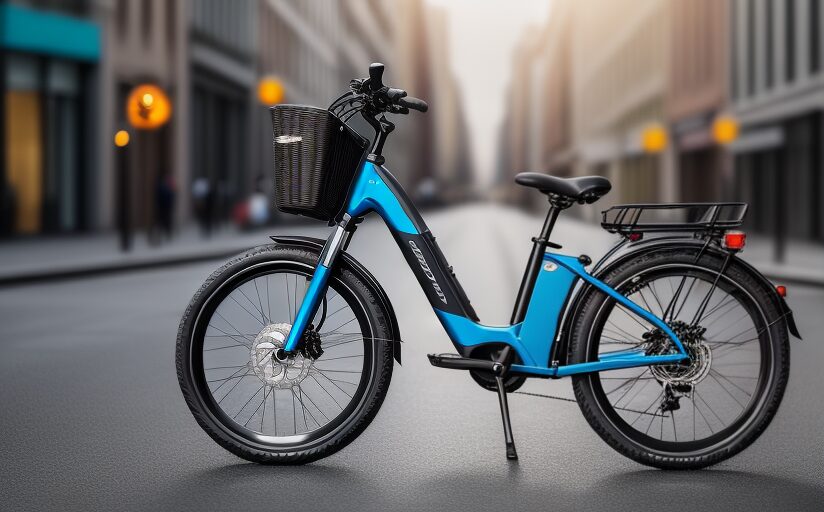
E-Bike Regulations and Standards in the United States
Electric bicycles, commonly known as e-bikes, are bikes equipped with an electric motor that assists with pedaling and enables riders to increase their speed. This overview is pertinent to entities aiming to import, produce, or distribute e-bikes within the United States. It encompasses a comprehensive look at both the regulatory and standardization landscape for e-bikes, touching on 16 CFR Part 1512, FCC Title 47, CPSIA, among others.
Understanding 16 CFR Part 1512 – Requirements for Bicycles
The Consumer Product Safety Commission (CPSC) instructs importers and manufacturers of bicycles, including e-bikes, to adhere to 16 CFR Part 1512 – Requirements for Bicycles to guarantee consumer safety.
Product Scope
16 CFR Part 1512 categorizes bicycles as two-wheeled vehicles driven by human power or as motorized, pedal-operated vehicles with a power output up to 750 watts. These vehicles should not surpass 20 mph when carrying a 170-pound individual on level, paved terrain.
Safety Requirements
Importers and manufacturers must ensure e-bike conformity with various safety requirements under 16 CFR Part 1512, including mechanical specifications, pedal and tire standards, front fork and reflector guidelines, and more.
Labeling and Testing
E-bikes must bear permanent traceability labels with manufacturer details, location, and production date. They must also pass several tests, such as those for protective caps, brakes, handlebars, forks, frames, and reflector alignment.
General Certificate of Conformity (GCC)
The GCC certifies that imported e-bike products meet the relevant consumer product safety standards, including CPSC standards. This certificate should list applicable standards and be supported by certificates and test reports.
FCC 47 CFR Part 15 – Radio Frequency Devices
The Federal Communications Commission (FCC) oversees the electromagnetic compatibility of radiofrequency devices under Title 47 CFR Part 15. Importers and manufacturers must ensure products, including e-bike components, comply before entering the US market.
Product Scope and Standards
FCC 47 CFR Part 15 applies to e-bike-related products such as motors, lights, screens, chargers, and wireless devices. The FCC provides measurement standards to ensure devices meet technical requirements, covering both unintentional and intentional radiators.
Certification and Labeling
Unintentional radiators must be authorized using the Supplier’s Declaration of Conformity (SDoC), while intentional radiators require FCC certification. Products must display compliance information and, for intentional radiators, an FCC identifier.
Energy Conservation and Efficiency Standards
The 10 CFR Part 430 and 10 CFR Part 431 establish energy efficiency testing and standards for consumer products and certain industrial equipment, including those used with e-bikes. These regulations mandate testing and certification to ensure energy conservation.
Certification and Compliance
Importers and manufacturers must submit certification reports to the US Department of Energy (DOE) for products like LED lamps and external power supplies. Annual filings are also required, with varying deadlines depending on the product.
Labeling and Standards for E-Bikes
The Energy Labeling Rule – 16 CFR Part 305 mandates labeling for electrical products, including e-bike components like lighting. UL standards, while voluntary, are crucial for e-bike safety and liability, with UL 2849 specifically addressing e-bike electrical systems.
Amazon Requirements
Amazon mandates sellers to demonstrate compliance with 16 CFR Part 1512 and other standards such as ANSI/CAN/UL 2849. Sellers must also provide company and product information, images, and test reports.
Potential Risks and ASTM Standards
Not all e-bikes and components are tested and compliant with UL or CPSC standards, posing risks such as fire or electrical hazards. ASTM standards provide guidelines for the mechanical structure of e-bikes, and testing services are often outsourced to specialized companies.
E-Bike State Regulations
US states have unique e-bike regulations regarding age restrictions, classifications, licenses, and registration. For instance, California limits power to 1,000 Watts and speed to 20 mph, while New York prohibits e-bikes on public roadways.
Additional Regulations
Other regulations affecting e-bikes include Hazardous Materials Regulations (HMR), UN 38.3 for battery transport, CPSIA for children’s products, RoHS for hazardous substances, Country of Origin labeling, California Proposition 65 for chemical restrictions, and packaging materials regulations.
Labeling and Packaging
E-bikes and packaging must be labeled with the country of origin, and packaging must adhere to heavy metals restrictions and suffocation warning labels in some states.

